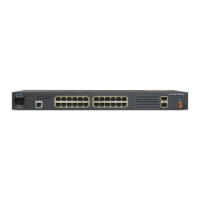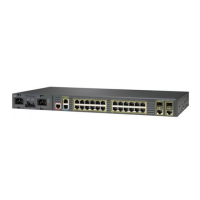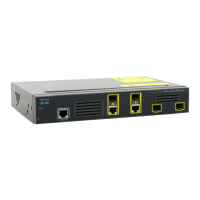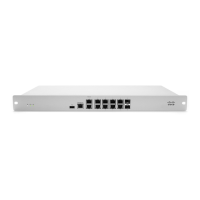26-15
Cisco ME 3400 Ethernet Access Switch Software Configuration Guide
OL-9639-07
Chapter 26 Configuring SPAN and RSPAN
Configuring SPAN and RSPAN
To monitor all VLANs on the trunk port, use the no monitor session session_number filter global
configuration command.
This example shows how to remove any existing configuration on SPAN session 2, configure SPAN
session 2 to monitor traffic received on Gigabit Ethernet trunk port 2, and send traffic for only VLANs
1 through 5 and VLAN 9 to destination Gigabit Ethernet port 1.
Switch(config)# no monitor session 2
Switch(config)# monitor session 2 source interface gigabitethernet0/2 rx
Switch(config)# monitor session 2 filter vlan 1 - 5 , 9
Switch(config)# monitor session 2 destination interface gigabitethernet0/1
Switch(config)# end
Configuring RSPAN
• RSPAN Configuration Guidelines, page 26-15
• Configuring a VLAN as an RSPAN VLAN, page 26-16
• Creating an RSPAN Source Session, page 26-17
• Creating an RSPAN Destination Session, page 26-18
• Creating an RSPAN Destination Session and Configuring Ingress Traffic, page 26-19
• Specifying VLANs to Filter, page 26-21
RSPAN Configuration Guidelines
• All the items in the “SPAN Configuration Guidelines” section on page 26-10 apply to RSPAN.
• As RSPAN VLANs have special properties, you should reserve a few VLANs across your network
for use as RSPAN VLANs; do not assign access ports to these VLANs.
• You can apply an output ACL to RSPAN traffic to selectively filter or monitor specific packets.
Specify these ACLs on the RSPAN VLAN in the RSPAN source switches.
Step 5
monitor session session_number
destination {interface interface-id [, | -]
[encapsulation {dot1q | replicate}]}
Specify the SPAN session and the destination port (monitoring port).
For session_number, specify the session number entered in Step 3.
For interface-id, specify the destination port. The destination interface
must be a physical port; it cannot be an EtherChannel, and it cannot
be a VLAN.
(Optional) [, | -] Specify a series or range of interfaces. Enter a space
before and after the comma; enter a space before and after the hyphen.
(Optional) Enter encapsulation dot1q or encapsulation replicate to
specify IEEE 802.1Q encapsulation or that the destination interface
replicates the source interface encapsulation method. If not selected,
the default is to send packets in native form (untagged).
Step 6
end Return to privileged EXEC mode.
Step 7
show monitor [session session_number]
show running-config
Verify the configuration.
Step 8
copy running-config startup-config (Optional) Save the configuration in the configuration file.
Command Purpose

